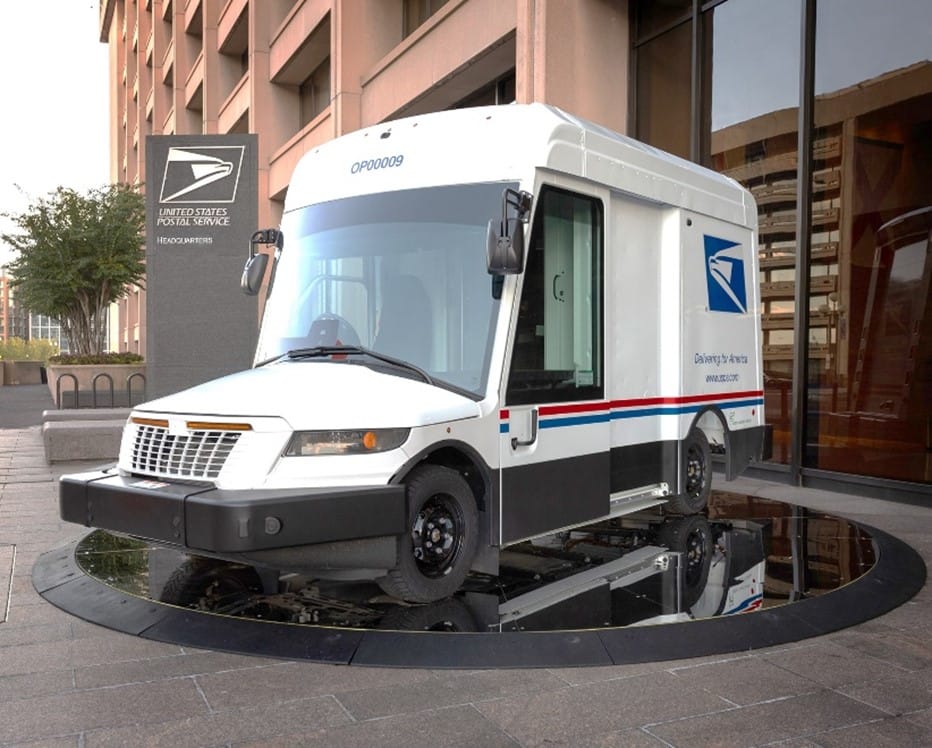Trump’s plan to cancel USPS EV trucks contracts shows contempt for taxpayers, letter carriers, and climate action

Quitting Carbon is a reader-supported publication. To support my work, please consider becoming a paid subscriber or making a one-time donation.
You would think that a multi-billion-dollar program to deploy tens of thousands of safer, more efficient mail delivery trucks made in the United States would align with Donald Trump’s “America first” mantra. Not if electricity powers the trucks, apparently.
Trump’s disdain for electric vehicles is seemingly so all-consuming that he is now threating to kill the U.S. Postal Service’s (USPS) next-generation fleet of all-electric delivery trucks.
“Donald Trump's transition team is considering canceling the U.S. Postal Service's contracts to electrify its delivery fleet, as part of a broader suite of executive orders targeting electric vehicles, according to three sources familiar with the plans,” Jarrett Renshaw and Alexandra Ulmer reported last week in an exclusive for Reuters.
“The move, which could be unveiled in the early days of Trump’s administration that begins on Jan. 20, is in line with Trump's campaign promises to roll back President Joe Biden’s efforts to decarbonize U.S. transportation to fight climate change – an agenda Trump has said is unnecessary and potentially damaging to the economy.”
Such a move not only defies common sense – the new electric delivery trucks are cheaper to operate and maintain than the decades-old model they are replacing. It also demonstrates Trump’s contempt for federal workers and climate action.
EV trucks save money
Staked with the $3 billion from the Inflation Reduction Act (IRA) to replace its aging fleet of mail delivery trucks, the Postal Service announced in December 2022 it would purchase at least 66,000 battery electric delivery vehicles over the next five years.
The procurement included 45,000 so-called Next Generation Delivery Vehicles (NGDVs), which Oshkosh Defense is building at a plant in South Carolina, as well as 21,000 commercial off-the-shelf vehicles from manufacturers like Ford, Ram Trucks, and Mercedes. The USPS pledged that all NGDV fleet purchases would be all-electric starting in 2026.
The Postal Service is also installing at least 14,000 charging ports from vendors like Siemens, ChargePoint, and Blink at its facilities across the country. In all, the USPS is investing $9.6 billion in its next-generation vehicles fleet.
The new NGDV, with 70 miles of range on a full charge, replaces the clunky, gas-guzzling (9 mpg) workhorse Grumman mail delivery truck. The new truck’s larger cargo area and electric drivetrain are two of the money-saving improvements compared with its aging predecessor, which debuted in 1987.
“The increased cargo capacity of these vehicles enables the transportation of more packages per trip, leading to a reduction in the number of required trips and resulting in greater efficiency. Coupled with their improved reliability these vehicles minimize downtime for maintenance and repairs,” the USPS said in an October 30 press release.
A March 2022 USPS Office of Inspector General report – published before the IRA had allocated $3 billion for the Postal Service to buy zero-emission vehicles – noted that “the upfront costs of an electric delivery vehicle and necessary charging infrastructure is significantly higher than the cost of buying a new gasoline-powered vehicle, but once purchased, electric vehicles are generally cheaper to operate.”
The report added that “longer routes are more suited to electric vehicles because the agency saves money on each mile driven.”
Letter carriers love the new trucks
The USPS started sending the new electric delivery trucks into the field this fall. Letter carriers love them.
“The first handful of Next Generation Delivery Vehicles that rolled onto postal routes in August in Athens, Georgia, are getting rave reviews from letter carriers accustomed to cantankerous older vehicles that lack modern safety features and are prone to breaking down – and even catching fire,” the AP’s David Sharp and Ron Harris reported in September.
The NGDVs come equipped with safety features lacking in the old Grumman trucks such as airbags, 360-degree cameras, blind-spot monitoring, collision sensors, and anti-lock brakes. Letter carriers will also benefit for the first time from another feature missing in the Grumman mail delivery truck: air-conditioning.
“I promise you, it felt like heaven blowing in my face,” postal worker Avis Stonum told Sharp and Harris, referring to her first experience working in an air-conditioned truck. “Richard Burton, another driver, said he appreciates the larger payload area, which can accommodate bigger packages, and the fact that he doesn’t have to crouch, helping him avoid back pain.”
“It makes the job easier to do because you’re not sweating bullets out there. And in Georgia, you can imagine how hot it gets,” Burton told New York Times reporter Michael Levenson in November.
New trucks delay strengthens Trump’s hand
It is head-scratching that Trump appears to be so eager to scuttle a project that will save taxpayers’ money and make postal employees’ workdays safer and more satisfying. When contacted by Reuters, a spokesperson declined to confirm whether Trump plans to cancel the USPS’ EV trucks contracts.
"President Trump will protect the freedom of Americans to drive whichever vehicle they choose, enhance his tough tariffs on Chinese-imported cars, and save the U.S. auto industry for generations to come. No policy should be deemed official unless it comes directly from President Trump," Trump transition team spokesperson Karoline Leavitt said in a statement.
Given this hedging, it is unfortunate that Oshkosh and the Postal Service handed Trump a gift – and political cover to kill the EV truck contracts – by failing to deliver the new NGDVs on time. In an exclusive published yesterday, Jacob Bogage reported for the Washington Post that as of November Oshkosh had only delivered 93 of the new NGDV trucks – compared to 3,000 originally expected by now.
The transition to a zero-emission vehicle fleet is a critical component of the Postal Service’s plans to reduce its carbon emissions by 40% by 2030. Scrapping the USPS’ electrification push, just as the new delivery trucks are starting to enter service, would waste taxpayer money, needlessly immiserate postal workers, and prevent the creation of what would have been “one of the world’s largest electric delivery vehicle fleets.”




